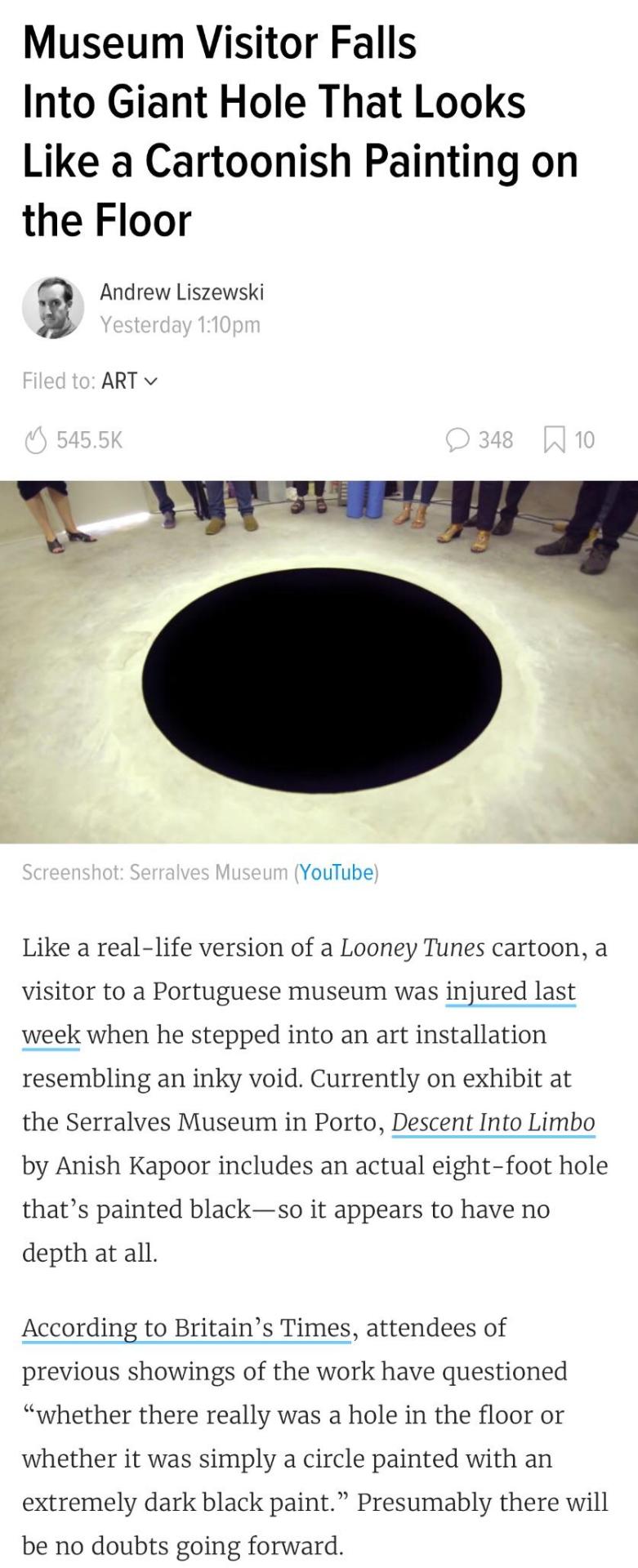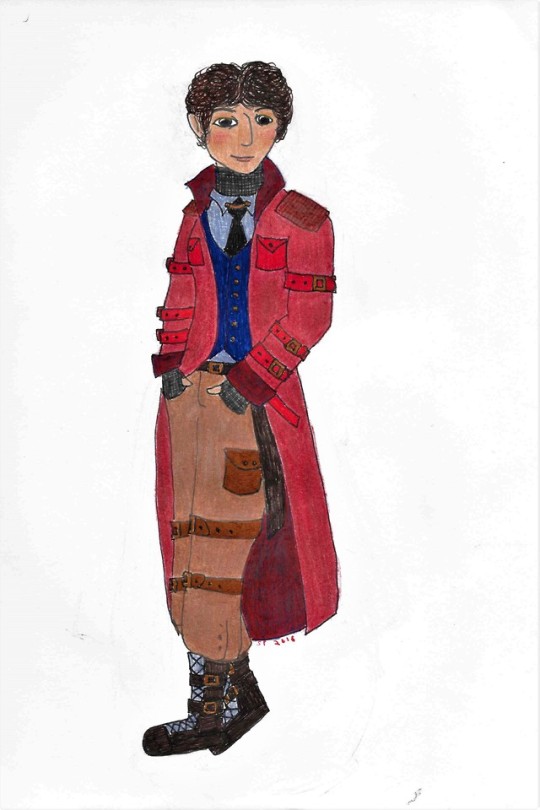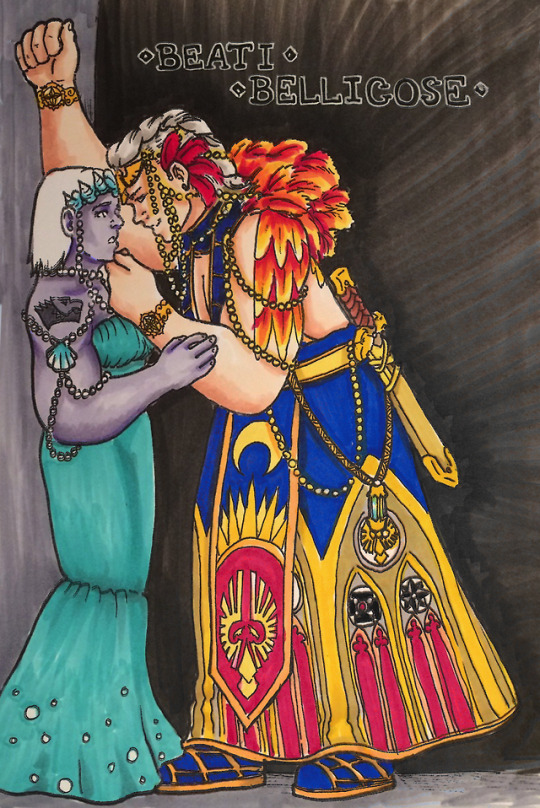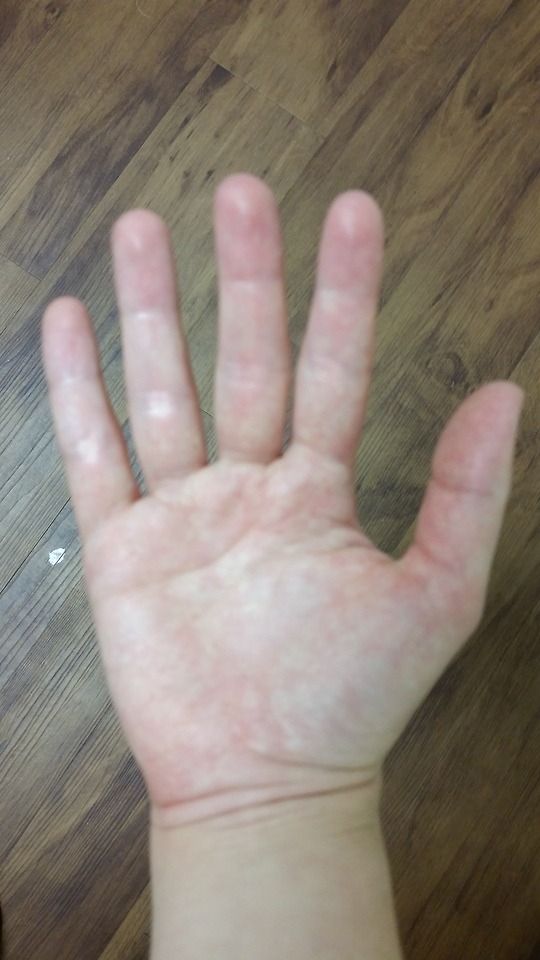Text
just… remember to be careful with antisemitism in goblincore with things like “ugly” green creatures that hoard precious stones and coins
have fun with it, absolutely! let it be empowering! just be aware that goblins are known to be used as antisemitic caricatures
35K notes
·
View notes
Text
everyone who reads this post will get some big spicy joy within 24 large minutes (hours)
329K notes
·
View notes
Text
I may need a new icon




LGBT Goblin icons!!
Like + Reblog if you use :3
4K notes
·
View notes
Text
If you would report an undocumented immigrant to ICE you would have reported me to the Nazis and I don’t fucking trust you
355K notes
·
View notes
Text
Joyce Fienberg, 75
Richard Gottfried, 65
Rose Mallinger, 97
Jerry Rabinowitz, 66
Cecil Rosenthal, 59
David Rosenthal, 54
Bernice Simon, 84
Sylvan Simon, 86
Daniel Stein, 71
Melvin Wax, 88
Irving Younger, 69
May their memories be a blessing.
28K notes
·
View notes
Photo
It's (hopefully inadvertent) antisemitic stereotypes. *Jazz hands*



i’ve been sitting here for like 5 minutes trying to think of a caption but i absolutely cannot think of anything funnier than this collection of images
#Before someone points out JJ Abrams is Jewish let me just say I know#and Tolkien and Rowling have disavowed antisemitism (Tolkien more convincingly imho)#buuuuut that's what happens when you don't read your folkloric sources with a critical eye#you get shit you didn't intend but that's still harmful#also still not convinced on JK tbh#the goblins are another example of her uncritical eye towards antisemitic stereotypes in European folklore#antisemitism#yes I know#I'm no fun#so sue me
202K notes
·
View notes
Text
Discuss: was Fallout New Vegas a revenge tragedy?
117 notes
·
View notes
Photo
Uh, guys? Threatening an Indian Jewish man with physical violance because you don't like his art is... a bad look.

I can’t believe this is real!
#Team Kapoor#Anish Kapoor#y'all need to stop#he and Stemple are probably having the times of their lives with this dumb 'rivalry'#and you guys are just being mean
162K notes
·
View notes
Photo
Shameless self-promotion again!

To be honest, one of the biggest changes between being an acolyte and an Inquisitor is that now people actually care how I dress. When I’m actually out investigating, I can dress how I want- but there are also times where I have to look… I don’t know. Inquisitorial, I guess?
(OOC: fill for Warhammer 40k OC art week day 3- work. It’s late because the mun is busy and tired.)
4 notes
·
View notes
Photo
I love the costumes!

40k OC Week kicks off!
Okay, I know its not in line with today’s theme, but today is @pahariofcharybdis‘s birthday, so the piece they wanted needed posting today! So have some @askthecustodes‘ Arturia teasing/flirting with Pahari.
13 notes
·
View notes
Text
So so excited to finally have a blog for Blue, and to be kicking it off with some fic!
Also, @flunkyofmalcador I think you mentioned wanting to read more about the pirates if they ever came up?
The Preservation of Life
(40k OC week prompt fill- Family)
Summery: Blue celebrates her first Purim with the crew of the Queen Esther.
Keep reading
10 notes
·
View notes
Photo
Doggie!

Tribune Arlette reunited with Buster after patrol duties.
Warhams OC week, day #1 ‘Family’
38 notes
·
View notes
Text
i dropped off my resume at this place at 1:15 and got called for an interview at 1:45 holy dang
418K notes
·
View notes
Note
I'm just currently a little confused about some information going around about Sappho? Some members of the lesbian community are saying that Sappho's bisexuality was fabricated by men as a way of erasing her lesbian identity and I'm just wondering if there are sources to support this or if it's just another case of biphobia?
Short Answer:
Here is the deal: No one knows the exact truth about Sappho. What we have is fragments of poems and some very flattering words from the Alexandrians. Besides having a ballpark of when she lived (600’s BC) and where (Lesbos), we know almost nothing about her.
But that’s really not the point.
Sappho wrote lyrical and romantic poetry about men and women because it was her job. She got PAID for this, presumably. We don’t know how she really felt about any of it. It certainly seems like she cared about the people she wrote about, and maybe she did. Or maybe she was just a really good writer.
Our culture is full of generalizations about history and historical figures. But it is only when Sappho is claimed as bisexual that people wring their hands about how we don’t know for sure. Applying any label to a historical figure is technically dicey, but it is only the bi ones that have to prove it 100% beyond a shadow of a doubt. The word lesbian, used to refer to women who are attracted to women, didn’t even exist in her time, but you don’t see people interrogating lesbians over historical inaccuracy.
Longer Answer with Historical Context (or, Ellie finally gets some use out of her Classical Studies degree):
The context of Sappho’s relationships with women is kind of complicated. Sappho ran a thiasos, a sort of informal finishing school for young unmarried women. Upper-class families would send their daughters to these academies for instruction in proper feminine behaviors, as well as music and poetry recital, before they transitioned into married life (Krstovic). Aphrodite, the goddess of love, was the patron deity of the thiasos, and Sappho frequently used symbols of Aphrodite - flowers and garlands, perfumes, incense, and outdoor scenery – as part of her love poetry to the young women under her tutelage (“Sapphos”). Many of Sappho’s poems were actually marriage songs for these girls when they left to marry men.
Sappho’s thiasos may be considered the female counterpart to the male education system. In the Athenian Greek world, it was common for older men to take a younger boyfriend, and this was an important part of training the boy for his adult public life , providing him with connections he would need to operate in a democracy. In Plato’s Symposium, Pausanias (himself an older lover), describes the relationship in terms of education. “When the former (the older lover) has the power to contribute towards wisdom and distinction, and the latter (the younger beloved) needs to acquire education and accomplishment” (Klink p.196-197). So if you want to talk about cultural differences, and how you can’t apply modern definitions to people in history, there’s your first point: When we talk about Greek homosexuality or Sappho, we’re talking about pedophilia, not the adult relationships that define modern gay/lesbian, bisexual relationships.
So Sappho was probably writing to under-aged girls. Athenian Greek readers would have probably seen an echo of their own pedophilic system in Sappho’s poetry. Whether or not they respected it the same way they respected their own male system is debatable, and given that women had such a poor role in Athenian society, they probably didn’t. But they would have recognized it as the same system, even while believing it to be “inferior”. Greek men saw female forms of the pedophilic system elsewhere. By 100 CE, Plutarch described Spartan women taking girls as lovers, as the explicit female counterpart to the male practice (Klinck 197). This may be late archaic Greek idealization of the past, but it introduces the idea that men would have been aware of women following similar homosexual practices. In Plato’s Symposium, Aristophanes talks about women who love women and equates it to heterosexual love, in that both heterosexuality and lesbianism were inferior compared to male homosexuality. He treated lesbianism as a joke, but he is clearly drawing parallels between it and male homosexual practices of the time (Klinck, 196-197).
But for all her same-sex love poetry, Sappho didn’t seem to have a queer reputation until 100-200 CE, nearly 800 years after her death. The earliest reference to Sappho’s sexuality doesn’t come until the second or third century CE, from a papyrus based off the earlier work of Chamaeleon. “She has been accused by some people of being licentious in her lifestyle and a woman-lover.” (Klinck, 194-195) “Woman-lover” is pretty clear, but take a minute to look at the word “licentious.” The verb is ataktos, meaning “not properly regulated,” “out of line,” or “unmanageable.” This word is important because it tells us about her sexual reputation.
By the Athenian period, women from Lesbos may have has a reputation for “unmanageable” sexuality, in much the same way the modern Western world stereotyped certain races and nations as more sexual. They may have especially had a reputation for oral sex, a more “slutty” act than ViP intercourse in the ancient world. In Wasps, a play by the Athenian comedian Aristophanes, the character Philocleon says he snatched up a flute-girl when she was going to “lesbianize” a man at the party, meaning she was going to perform oral sex with him (Klinck, 195). The effect is to equate the country with “unmanageable” sexuality. Other references to lesbian actions are less clearly oral, but definitely sexual in nature. The joke seemed to be that women from Lesbos were so sexual, they’d even do anything, even each other.
So Sappho’s reputation was one of “unmanageable” sexuality, whether she was writing homoerotic poetry about girls or lusting after younger men. When people imply that Sappho’s male relationships were made up in order to make her seem “straight,” they are forgetting that those stories did nothing to improve her reputation, but just made it worst. In one of the most popular stories about Sappho’s love life, told by Ovid and comic poet Menander, Sappho falls in love with a beautiful young male sailor named Phaon who will not have her. Finally in despair, she commits suicide by throwing herself off a cliff into the sea. The point in making her fall in love with a man was never to make her seem safely straight. The point was to make a joke at her expense, about how she was so sexed up, that even as an ugly old woman she was throwing herself at young men who would never be interested in someone like her. Ovid and Menander weren’t saving her reputation; they were painting her as a slut. As 21st century bisexual women, the stereotype parallels seem obvious to us.
The later focus on Sappho’s licentiousness, either towards women or men, may also be the product of shifting sexual mores. After all, there are nearly 300 years between Sappho’s life in (circa 570BCE) and her appearance in Athenian comedies and philosophies circa 300BCE, and nearly 800 years before she is discussed in poetry treatises in (200 CE). Research Anne L. Klinck observes, “Attitudes towards sexuality changed in the fifth and fourth centuries BCE, and perhaps the poetry of female passion came to be regarded as unseemly” (196).
No one knows how Sappho’s poetry was originally published while she was still alive, but by the Era of Alexandrian scholarship in the second and third century BCE, her works were collected into a standard 9 volumes, none of which exists today, but we know that the whole first volume was made up of heterosexual marriage poetry, family, and religion. Because of her lustful reputation, her works were targeted for censorship first by Bishop Gregory Nazienzen of Constantinople in 380CE, and again in 1073 by Pope Gregory VII ( Krstovic). Most of Sappho’s work exists in fragments and scraps, and only one full poem still exists. Many of these came from Alexandrian textbooks of poetry and style, in which only short pieces were quoted as examples, because it was assumed the reader would have access to the full poems. These Alexandrian textbooks were not re-discovered until the renaissance. Other Sappho fragments come from 19th century discoveries of papyri scraps preserved in the Egyptian desert, and early 20th century discoveries of scraps used in the paper-mache liners of Egyptian of coffins (Krstovic), and more recently a lengthy portion of a poem about her brother was discovered on another papyrus scrap (Romm).
In the 19th century, Sappho became a symbol for a growing movement of women-loving-women, even giving them her name. In the 19th century, women who loved women were frequently described as sapphic women, even if they also had relationships with men. The distinction between lesbians and bisexual women wasn’t nearly as important as our culture makes it out now. Later the sapphic movement took its name from Sappho’s homeland, the island of Lesbos. The association came about because of her love poetry written towards the young women she taught at her school.
But the ultimate question: did Sappho write love poetry to men? The answer: not many, but yes. . Because of Sappho’s association with lesbians over the last few hundred years, modern writers tend to ignore her bisexuality. When discussing her supposed lesbianism, author’s will ignore evidence that she wrote of love between women and men, such as the epithalamia (marriage poetry), and many of the fragments are ambiguous, but clearly lack feminine endings. Some translators will purposely translate these ambiguous fragments with feminine pronouns to imply a female love interest, even when those endings are not clear in the source material. When translating Sappho in her study of homoerotic elements, Klinck gives an example of a fragment that is frequently translated as the feminine participle when the actual word is optative, and another example of a fragment with a masculine ending that “may not be significant” (Klinck 201). Translators can sometimes be forgiven for this oversight – many of them are trying to strengthen the argument that Sappho really was as queer as her reputation – but it is not necessary to risk misinterpretation to do that.
tl;dr:
If there is a conspiracy afoot to fake Sappho’s poems about men to erase her lesbianism, we’ve never heard of it. But we have heard of a lot of lesbians whine that in honoring the full spectrum of what we DO know about Sappho, we’re taking something away from them. This is bullshit and biphobia talking.
We may never know the exact truth, but what we do know looks pretty damn bisexual to us.
- Ellie and Sarah
Works Cited
“Sappho.” Encyclopaedia Britannica. Encyclopaedia Britannica Online Academic Edition. Encyclopædia Britannica Inc., 2014. Web. 27 Feb. 2014.
Krstovic, Jelena. “Sappho: Overview.” Gay & Lesbian Biography. Ed. Michael J. Tyrkus and Michael Bronski. Detroit: St. James Press, 1997. Biography in Context. Web. 21 Feb. 2014.
Klinck, Anne L. “’Sleeping in the Bosom of a Tender Companion’: Homoerotic Attachments in Sappho” Journal of Homosexuality. 49.¾ (2005) :193-208. Database name. Web. 20 Feb 2014.
Romm, James. “Scholars Discover New Poems from Ancient Greek Poetess Sappho.” The Daily Beast. 28 Jan. 2014. Web. 27 Feb. 2014. http://www.thedailybeast.com/articles/2014/01/28/scholars-discover-new-poems-from-ancient-greek-poetess-sappho.html
3K notes
·
View notes


